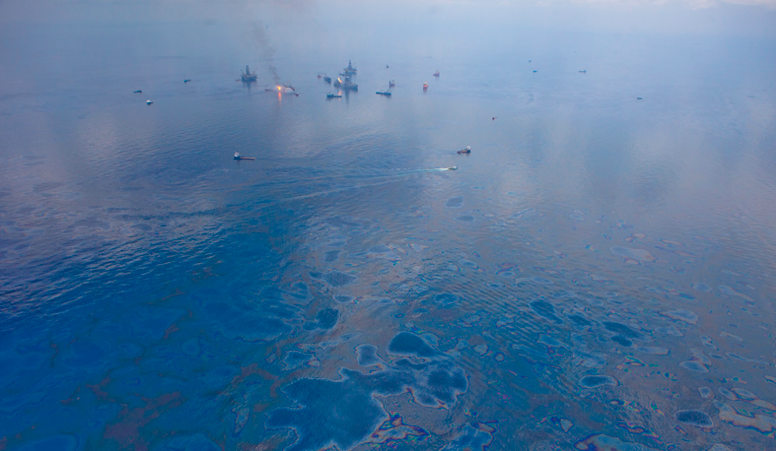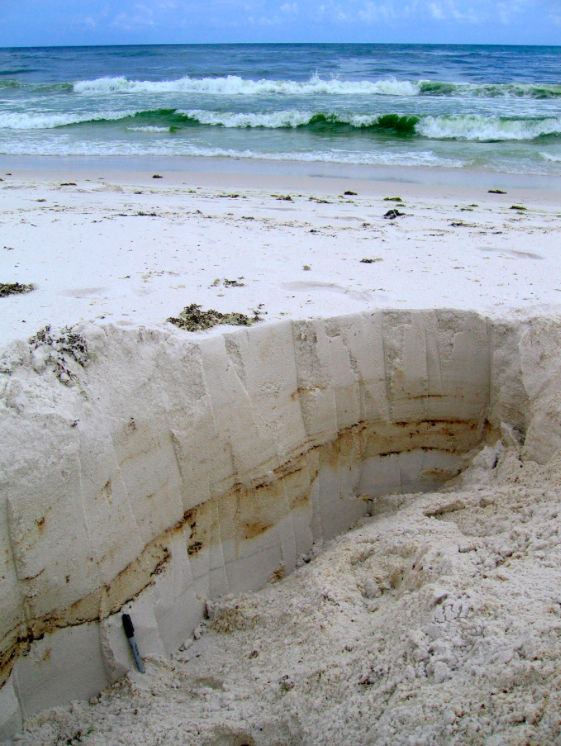
Mar 31, 2020 - Atlanta, GA
April 20, 2010: The Gulf of Mexico becomes an ecological disaster zone.
An explosion on the Deepwater Horizon marine oil platform leased by British Petroleum kills 11 workers and sends thousands of barrels of crude oil pumping into the water, all just 40 miles off the Louisiana coast. At its peak, it was estimated that 60,000 barrels of oil a day went into the Gulf, creating a 57,000 square-mile slick and causing damage to more than 1,000 miles of shoreline.
Deepwater’s 10th anniversary is a chance to recall compelling videos and interviews regarding the world’s worst environmental disaster. But advances in microbial research have also helped scientists learn more about the ecological effects of the spill, according to an article written by a Georgia Tech professor for a top scientific magazine.
“Deepwater Horizon and the Rise of the Omics,” written by Joel Kostka, professor and associate chair in the School of Biological Sciences and professor in the School of Earth and Atmospheric Sciences, with co-authors Samantha Joye and Rita Colwell, is featured in the April 2020 issue of Eos, the research magazine of the American Geophysical Union. The AGU has more than 60,000 members, and it is one of the largest scientific organizations in the world (College of Sciences Dean Susan Lozier is AGU’s president-elect).
Microbial Genomics for Coastline Cleanups
Kostka, who researches microbial ecology, is currently studying Deepwater’s legacy of microbial genomics for the Gulf of Mexico Research Initiative, or GoMRI, a $500-million effort funded by British Petroleum. The GoMRI has already supported thousands of research scientists, Kostka says.
“Today scientists have the gene sequencing techniques to properly study the role microbes play and the mechanisms with which they break down oil — with the hope that one day we might be able to deploy them deliberately to protect or restore the environment around a spill,” writes Heather Goss, Eos editor-in-chief, in her “From The Editor” introduction in the magazine.
A Decade of Omics, Environmental Microbiology Evolution
The previous record-holder for environmental disaster before Deepwater Horizon was the Exxon Valdez oil tanker spill off the coast of Alaska in 1989. At that time, “environmental microbiology was a relatively nascent field,” writes Kostka, who is also Associate Chair of Research in the School of Biological Sciences. “But in the past decade, a variety of so-called omics techniques, focused on parsing the genetic makeup of cells, have emerged and offered researchers powerful new ways to study microbial communities and the roles played by specific groups of microbes.”
Omics refers to the suffix applied to relative new fields within biological sciences, including genomics, the study of genomic structures and processes. “The DWH spill was also the first major environmental disaster for which genomics technologies had matured to such an extent that they could be deployed to quantify microbial responses over large spatial and temporal scales,” Kostka writes. “As a result, the field of environmental genomics matured during the past decade in parallel with the DWH response. Technical advances in genomics enabled direct, comprehensive analyses of the microbes in their natural habitat, be it oil-contaminated or uncontaminated seawater or sediments. Researchers studying the effects of the DWH spill presided over an explosion of microbial genomics data that enabled major advances in oil spill science and allowed scientists to ask, ‘What microbes are there?’ in complex communities in unprecedented detail.”
Kostka adds that combining genomics with knowledge and tools from other disciplines, including biogeochemistry and oceanography, have allowed scientists to “identify disturbances that might otherwise go unnoticed” by looking for microbial populations that represent bioindicators of ecosystems.
“With these efforts, global ecosystems can be better protected and, when necessary, restored in the face of diverse environmental stressors,” Kostka says.
Additional Deepwater Research: Superbugs, Biomarkers
Although microbes have been used to help clean up spills, current methods are expensive and not natural to the environment being cleaned. But scientists have isolated a “superbug” that, while belonging to the same genus as E. coli and Salmonella, could also help break down petroleum products in multiple, different environments.
Better study of the organisms, genes, and metabolic pathways in microbial communities allow scientists to use them as biomarkers, giving them information on the health of an ecosystem “like a blood test can point physicians to disease diagnosis and treatment options,” Kostka writes.
“The overall goal of this work is to chart a course for future research on using microbial genomics to understand fundamental change in the oceans due to disturbances such as climate change or oil spills,” he says.
Read more about Kostka’s research and findings in Eos magazine. Read the Spanish version of the Eos magazine article: "Deepwater Horizon: La Plataforma Petrolera y el Surgimiento de las Técnicas Ómicas".



